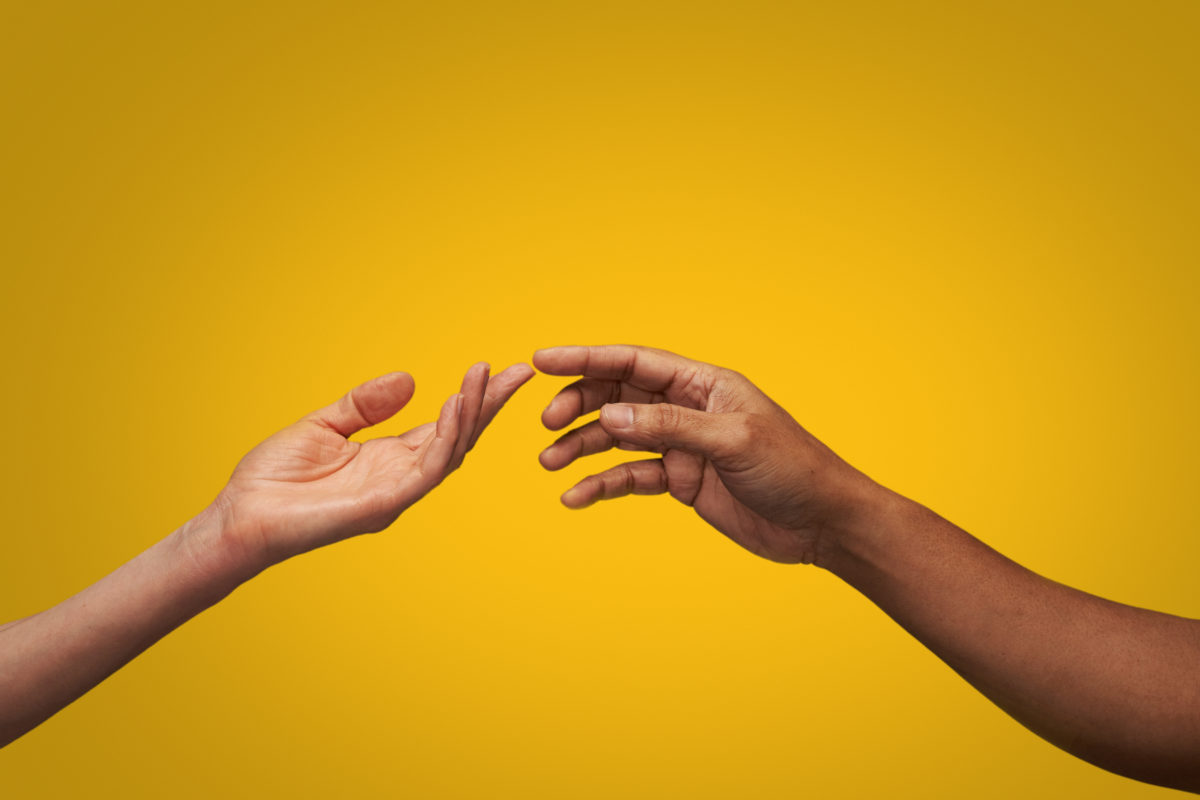Did you know babies who are touched less may develop slower than their peers? It’s true, and the negative effects that lack of physical touch can have on a person is a lifelong reality.
“Physical touch meets an essential human need,” says Dr. Jeanne James, pediatrician and chief medical officer for BlueCare Tennessee. “In childhood, a nurturing touch helps kids feel loved and accepted, which aids in healthy development. But the need for touch doesn’t stop there. All the way into and through adulthood, physical touch promotes the release of oxytocin, which helps people stay calm and improves mood.”
Is there such a thing as a ‘love hormone’? Exploring the effects of oxytocin
Here’s what you need to know about physical touch and human health.
1. Babies and physical touch
Dr. James: Immediately after birth, skin-to-skin contact between infant and mom benefits both. It helps regulate an infant’s breathing, heart rate, and temperature, and it calms mom as well. At home, parents who continue skin-to-skin may see more positive effects.
Skin-to-skin contact can:
- Build a consistent emotional bond between parents and baby
- Help calm babies, leading them to cry less and sleep better
- Reduce stress in moms who may feel more responsive to their baby’s needs
- Help infants develop their recognition of self
Dr. James: A key part of a baby’s development is learning that their actions get a response from the people around them. Physical touch is one way adults let them know they’ve been heard. For example, if I cry and someone picks me up, I understand that I have power in the world around me.
Related from WellTuned: Why children need routines [link to routine article once live]
2. Children and physical touch
Dr. James: As children develop, physical touch helps develop pathways in the brain that build their social abilities, self esteem and even empathy for others.
Conversely, children who don’t get enough physical and emotional attention are more likely to face challenges.
Lack of physical touch and emotional support may lead a child to:
- Be at higher risk for behavioral, emotional and social problems
- Have higher levels of stress hormones (cortisol) and lower levels of hormones that are linked to emotional bonding (oxytocin)
- Experience delayed development
- Engage in behaviors that get them into trouble
Dr. James: That said, if you didn’t get as much physical touch as you needed as a baby or child, know this: No one is marked for life. You can develop this early understanding of self and others through different interactions. And if you feel like you didn’t get what you needed as a child, you can always talk to someone to help you work through those feelings.
3. Adults and physical touch
Dr. James: For adults, physical touch benefits our immune system, helps us regulate cortisol levels and reduces stress.
Touch also plays a role in how we interact with other people. When we hug our child or pat a teammate on the back, our brains associate that touch with building a bond with that person. There’s a sound scientific reason for that: skin is the largest organ in our bodies, and our brains are always on the lookout for touch sensations — good or bad. Positive touches — hugs, fist bumps, handshakes, high fives — can boost oxytocin, lowering anxiety and stress levels.
10 things you don’t know about your skin
What is touch starvation?
Dr. James: When people don’t get as much physical touch as they’re used to, or as much as they need, that can have negative effects on their health. This is known as touch starvation.
Symptoms of touch starvation include increased:
- Heart rate
- Blood pressure
- Muscle tension
- Breathing rate
- Cortisol levels
- Stress
- Anxiety
- Depression
- Sleep problems
- Infections
- Post-traumatic stress disorder
Dr. James: Touch starvation can happen for many reasons. You might have recently experienced the death or illness of a loved one, or the end of a significant relationship. Maybe you moved somewhere you don’t know people well, or you recently entered a long-term care facility. (Seniors are already one of the most at-risk populations for touch starvation.) In recent years, all of us likely experienced touch starvation to some degree due to social distancing during the COVID-19 pandemic.
3 ways to combat the effects of touch starvation
Dr. James: You can combat touch starvation in many ways. Experts recommend everything from video chat and dancing to massage therapy.
Three good ways to replicate the effects of physical touch are to:
1. Use a weighted blanket
Dr. James: The long, low pressure provided by a weighted blanket stimulates your nervous system, which can have restorative properties.
2. Boost your feel-good hormones with exercise
Dr. James: Whether you take an exercise class — in person or online — or you simply walk around your neighborhood, exercise will boost your oxytocin and endorphin levels.
3. Interact with your pets
Dr. James: Interacting with your pet has many benefits, from lowering your heart rate to helping you relax. Studies show that oxytocin levels rise when owners look into their dogs’ eyes, for example, or stop to pet them.
Tip: Take your dog for a walk and pet them afterward, and you’ll double your touch-starvation prevention all at once!
Get more information about specific health terms, topics and conditions to better manage your health on bcbst.com. BlueCross BlueShield of Tennessee members can access wellness-related discounts on fitness products, gym memberships, healthy eating and more through Blue365®. BCBST members can also find tools and resources to help improve health and well-being by logging into BlueAccess and going to the Managing Your Health tab.


